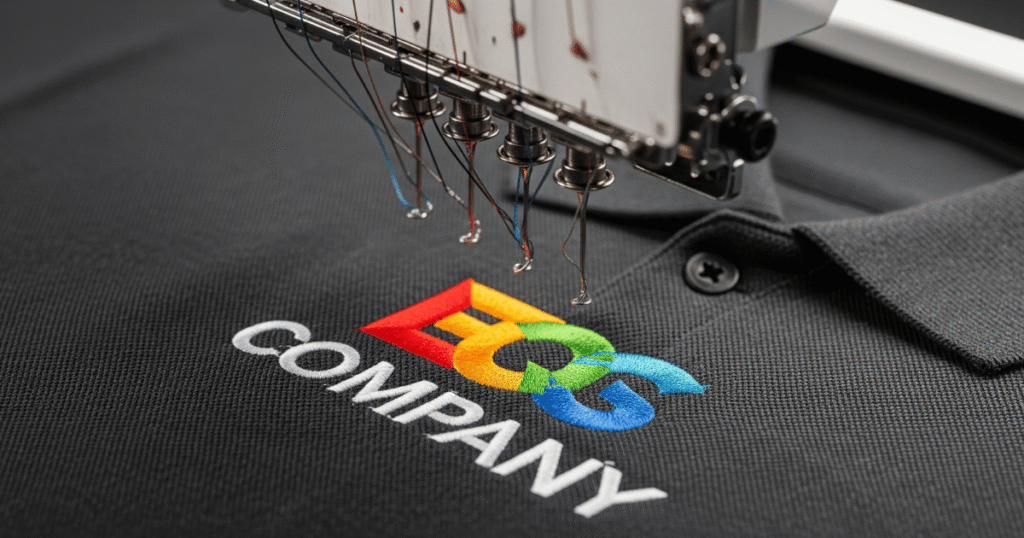It started with a patch. A small boutique owner in Austin, Texas needed a last-minute rush job: a logo embroidered onto 200 canvas totes for a weekend market. Her usual vendor canceled. She found a digitizing service online that promised 24-hour turnaround. Skeptical but desperate, she placed the order.
The next morning, she received the digitized design file. It wasn’t just functional, it was flawless. Threads stitched perfectly, curves and spacing tight, and not a single misalignment. Customers loved the detail. She sold out.
That moment was more than just a win, it was her first real lesson in the power of embroidery digitize.
As the custom merchandise industry continues to explode, expected to surpass $4.3 billion by 2027 in the U.S. alone (Source: IBISWorld), high-quality embroidery digitizing has become an essential backbone of brand identity, personalization, and fast delivery.
What Is Embroidery Digitize and Why It Matters
Embroidery digitize refers to the process of converting artwork, logos, designs, text, into a machine-readable stitch file that embroidery machines can follow. Without it, no embroidery can be done. It’s the bridge between design and execution.
Good digitizing = flawless embroidery.
Bad digitizing = broken needles, thread breaks, distorted results, lost customers.
For creators, crafters, fashion designers, and business owners, embroidery digitizing isn’t optional. It’s essential.
Learn more about embroidery digitize and how it’s transforming garment personalization today.
The Growing Demand for Precision and Speed
According to a 2024 report by Grand View Research, the global custom apparel market is growing at double-digit rates, driven by eCommerce sellers, small batch manufacturers, and personalized product demand.
More people are buying custom embroidered merchandise. That means:
- Faster turnaround time expectations
- Increased demand for file accuracy
- Compatibility with various machine brands and formats (PES, DST, EMB, etc.)
With all this in motion, embroidery digitize is no longer just a technical task. It’s become a critical step in customer satisfaction.
What Makes a Digitized File High Quality?
Several factors separate amateur digitizing from professional results:
- Underlay Stitching: Invisible but essential for structure and durability
- Pull Compensation: Prevents shrinking or distortion during stitching
- Density Settings: Balances thread coverage without bulk
- Pathing Logic: Determines the stitching order to reduce time and thread breaks
Bad digitizing skips these. Good digitizing makes them invisible to the eye, but perfect in execution.
Real Use Cases from the Field

1. Small Business Merchandise
Boutiques and online sellers increasingly use embroidery for branding. A clean, digitized logo on hats or aprons boosts perceived value dramatically, often letting businesses charge 25–40% more per product.
2. Teamwear and Events
Event planners and sports organizations rely on embroidery digitizing for bulk uniforms, patches, and accessories. Precision in digitizing means fast, consistent production without delays or errors.
3. Fashion Designers and Artists
Designers pushing creative boundaries often send complex illustrations for embroidery. Only advanced digitizers can interpret gradients, textures, and unusual shapes accurately.
Common File Formats Used in Embroidery Digitize
A professional digitizing service should support formats such as:
- DST (Tajima machines)
- PES (Brother, Babylock)
- EMB (Wilcom native)
- EXP, JEF, CND, XXX, and more
More than file conversion, digitizing includes creative stitch planning, layering, and material compensation. One format isn’t enough, quality matters across the board.
Why DIY Embroidery Digitizing Often Fails
Many try free software or YouTube tutorials to DIY their digitizing. While it works for very basic fonts or shapes, the limitations quickly show:
- Thread breaks
- Misalignment
- Stiffness or puckering in fabric
- Incompatible file formats
It’s not about the software, it’s about understanding fabric behavior, thread types, stitch physics, and embroidery machine logic.
How Embroidery Digitizing Helps Scale Your Brand
As creators scale up, Etsy shops, e-commerce storefronts, local merch businesses, professional digitizing is the silent engine behind smooth operations.
It allows for:
- Faster production
- Consistent results across different garments
- Improved customer satisfaction
- More repeat orders
The Future of Embroidery Digitize in 2025 and Beyond
Expect more AI-powered software, cloud-based file management, and machine learning corrections in real-time.
But even as tech evolves, the human skill behind digitizing, knowing when to use a tatami fill vs. satin, or how to balance tension across hats vs. denim, will remain irreplaceable.
The digitizing profession is becoming more valuable, not less.
Tips for Choosing a Digitizing Provider
While this article avoids promotion, here are a few things any good digitizing partner should offer:
- Support for a wide range of file formats
- Real humans doing quality checks
- Quick turnaround without compromising on stitch logic
- Custom digitizing for hats, 3D puff, applique, etc.
- Access to revisions if needed
Final Thoughts
Embroidery digitize may seem like a hidden process, but it’s one of the most important steps in any modern garment customization business.
Whether you’re starting a new Etsy store or scaling your apparel brand, your embroidery is only as good as the file that guides it. Invest in the right skills, partners, and formats, and watch the quality of your output transform overnight.
What would your brand look like if your embroidery actually matched your vision?


